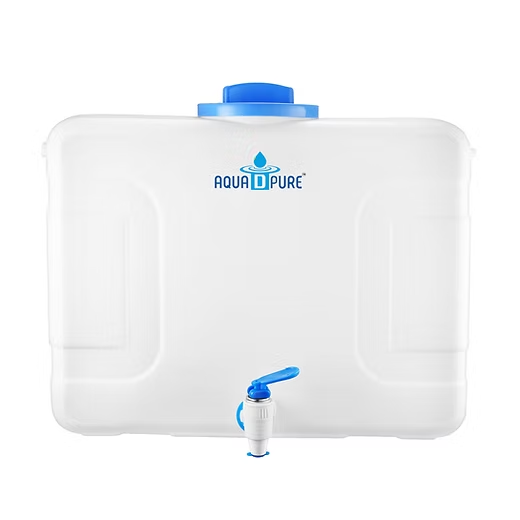storage tank

The storage tank in a water purification system plays a vital role in ensuring a steady supply of filtered water. Its function is particularly important in systems like reverse osmosis (RO), where water purification can take time due to the slow filtration process.
Function of the Tank
- Storage of Purified Water:
- The tank holds filtered water, allowing it to be readily available for use at any time. This eliminates the need to wait for the system to produce water on demand, especially in slow filtration systems.
- Maintains Pressure for Dispensing:
- The tank is typically equipped with a pressurized air bladder. As water fills the tank, the air compresses, creating pressure that helps dispense water quickly and efficiently when the faucet or valve is opened.
- Ensures Continuous Supply:
- By storing purified water, the tank acts as a buffer, ensuring there’s enough water for peak usage times or for multiple users simultaneously.
- Reduces Pump Wear:
- In systems with a pump, the tank minimizes the frequency of the pump cycling on and off, which extends the pump’s lifespan and conserves energy.
Types of Tanks
- Pressurized Tanks:
- Common in RO systems, these tanks use an air bladder to maintain pressure and quickly dispense water.
- Atmospheric Tanks:
- Typically used in larger systems or gravity-fed setups, these tanks rely on gravity or an external pump to deliver water.
Advantages of Having a Tank
- Ensures an immediate supply of purified water.
- Balances flow and pressure for consistent performance.
- Reduces waiting time, especially in systems with slower filtration rates.
Maintenance of Storage Tanks
- Regular Cleaning:
- Periodically clean the tank to prevent bacterial growth or sediment buildup.
- Check Pressure (for pressurized tanks):
- Ensure the air bladder pressure is within the recommended range (typically 7–10 psi when empty).
- Replace as Needed:
- Over time, the air bladder or other components may degrade. Replace the tank if performance declines.
